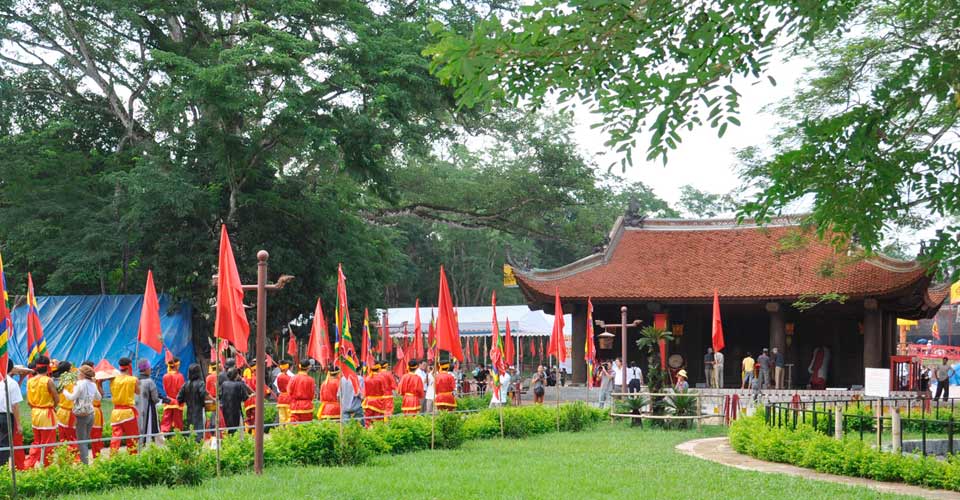From Thanh Hoa city, 50 km north-westwards, under the green umbrellas of Xuan Lam Commune, Tho Xuan District, Thanh Hoa Province, visitors will see a famous relic complex associated with the life and career of King Le Thai To and the insurrection of Lam Son insurgents in the 15th century.
After 10 years of leading the rebellion Lam Son against the Northern enemy won, in 1428 Le Loi as emperor, took the name of Le Thai To, based in Dong Kinh (Thang Long). At the same time, it was built in the homeland of the remote mountainous area of Lam Son, Tho Xuan, Thanh Hoa, a city called Lam Kinh (also known as West Kinh).
According to history and evidence from the excavations showed that the city of Lamjing was built quite scale with the architecture of "internal, foreign" including royal palace, temple, temple, dragon court, , Lam vuong Kinh in the North on the mountain Oil, south toward the Chu River, before the mountain Lord to make a sentence, the left forest Phu Lam, the right side is Mount Huong. This place has many magnificent buildings, such as magnificent temple, dragon temple, the main hall
Over the past five centuries, most of the works in Lam Kinh have been ruined, leaving only four tombs of the Le dynasty and a mausoleum of the queen, Queen Ngo Thi Ngoc Giao (mother King Le Thanh Tong).
In 1962, Lam Kinh historical relic was ranked by the State as a national historical monument. In 1994, the state approved the restoration project of about 50 construction works, including big projects such as: Ngoc, West Lake, ancient well, This is one of the famous tourist sites of Thanh Hoa.
To enter the center of Lam Kinh royal palace, visitors climb over a stone bridge curved across the river Ngoc Nu water blue. Through the 50 meter, visitors will encounter a smooth green grass, on the right side there is an ancient well, water in climbing.
Next to the gate, inside the door, the left side has more than 300 old trees spreading the ball to cover the top of the subject. Next to the dragon yard, the two sides have green trees. Going through the dragons field to the main hall. This is the place where kings and tide discuss the water. Three main buildings are made of wood, considered to be of special value in terms of architectural art in the Le dynasty. However, this project has become a ruin and is currently in the process of embellishment. Behind the main hall are 9 shrines, now restored successfully.
From the center of the royal citadel, along the lined red brick paths spreading in all directions under the forest canopy, visitors will come to the tombs of the Le dynasty nestled under the forest canopy, Climbing to the summit of the mountain, windsurfing, or enjoying the scenic West Lake scenery. In addition to enjoying the beautiful scenery and discovering the cultural, architectural, historical, and annual values, on 22 The festival, meaning the anniversary of the death of King Le Thai To, visitors have the opportunity to attend the Lam Kinh festival to be in harmony with the festive atmosphere of the people of the Charity land with many traditional folk games. And this is also a chance to remember the glorious work of a famous king in the feudal history of Vietnam.

